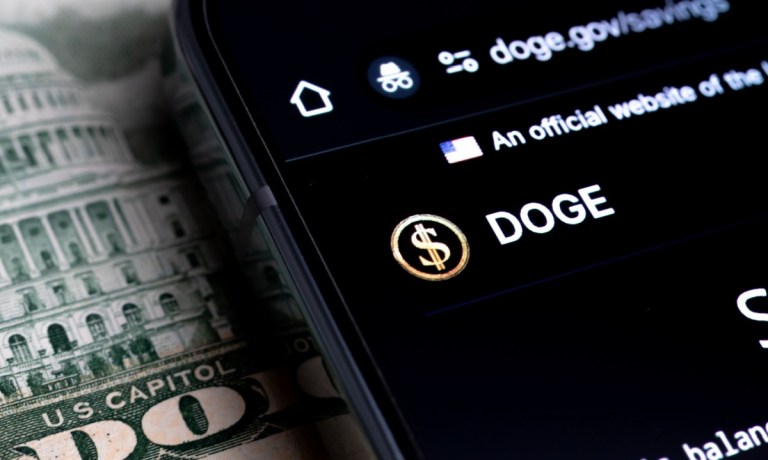Why Amazon And Other Retailers Are Turning To Biometrics
Retail keeps embracing numerous new technologies, and biometrics is not only one of them, but an area of recent growth and development, including via some of the biggest names in commerce.
Take Amazon, which continues to expand its brick-and-mortar retail footprint, and the technology underlying those stores. The company is apparently making a bet that the future of retail, and retail payments, will involve consumers’ hands.
In fact, back in September, reports emerged that Amazon had started to experiment with hand recognition-based payments at its Whole Foods locations. The tests involved the Amazon-owned grocery chain’s New York employees, along with custom-fitted vending machines. As per the New York Post, the technology was set to make a wider appearance before too long.
Amazon Plans
Then in December, it become known that Amazon has filed a patent for “a scanner device [that] is used to obtain raw images of a user’s palm that is within a field of view of the scanner,” according to another report. “The first set of images depicts external characteristics, such as lines and creases in the user’s palm, while the second set of images depicts internal anatomical structures, such as veins, bones, soft tissue, or other structures beneath the epidermis of the skin.”
Amazon, as is typical, isn’t talking about that patent filing or where the technology might lead. But silence can sometimes be deafening when it comes to Amazon and its plans for the future or retail. According to reports from Dow Jones and The Wall Street Journal, if sources are correct, Amazon is indeed pretty focused on hand-based biometric retail and payment technology. As well, the plans apparently go beyond about how it can be applied to the point of sale (POS) at Whole Foods and Amazon Go locations — as had been previously reported.
What that means is that Amazon is apparently thinking broadly about hand payments and about how it can expand its ecosystem into more digital commerce touchpoints that it currently controls. Amazon doesn’t seem to just want to change the way customers pay when shopping with them. Nope. Amazon apparently aims to use consumers’ palms as form factors in pretty much any place the customer buys and transacts — think of it, perhaps, as omnichannel biometric retail.
Larger Trends
Amazon is not the only biometric player when it comes to retail innovation. Biometrics could find more use in the area of subscription commerce, for instance, as recent PYMNTS research confirms. Technologies and processes powered by artificial intelligence, advanced machine learning and, yes, biometrics are increasingly enabling companies to strike a balance between safety and convenience in the onboarding and payment process. One general finding of that research report as it applies to the fast-growing space of subscription commerce comes down to this: For many companies, typical biometrics is no longer good enough to effectively fight fraud; more aggressive solutions are also using facial recognition technology that recognizes unique vein patterns in individuals.
Along with a focus on technology, knowing what customers value is a vital weapon against churn and fraud, explains Kate Thunnissen of Trint, a London-based automated speech-to-text platform provider. “There is no better product development team than customers,” Thunnissen says.
QSR Interest
Facial recognition is also gaining ground in other retail situations — and sometimes in concert with self-service kiosks, another big retail trend, and inside quick-service restaurants (QSRs). According to a new study from the National Restaurant Association and Technomic, in fact, 22 percent of consumers used kiosks to order food last year, demonstrating the power of that trend in the QSR world. Examples include CaliBurger and Dallas-based Malibu Poke, both of which have been utilizing facial-recognition ordering technology.
More specifically, Jon Alexis, owner of Malibu Poke, said the biometric system has helped that QSR retail operation retain customers, who are attracted by the technology’s capability to enable the quick and efficient reordering of customers’ favorite meals. Users who approach the self-service kiosks can place new orders or repeat orders either by facial recognition scan or by personally identifiable information (PII), like a phone number or credit card. Users ordering with the kiosks for the first time are prompted to receive a facial scan to remember their orders for future purchase.
Biometrics is still a relatively new player in the retail world. But you can bet that if Amazon is looking to expand the technology — along with the other factors in play — biometrics has a bright future ahead if it.
Judge Prevents DOGE From Accessing Social Security Information

A federal judge issued a temporary restraining order preventing the White House’s Department of Government Efficiency (DOGE) from accessing personally identifiable information from the Social Security Administration.
The ruling came in response to a lawsuit brought by a coalition of unions and retiree groups, CNBC reported Thursday (March 20).
The judge said in her ruling that DOGE had not provided any reason why it needed to access the data, and that allowing the group access to that data would create a risk of exposing Americans’ private information, according to the report.
She also ordered DOGE to delete any non-anonymized personally identifiable information gathered since Jan. 20, the report said.
The judge added that the plaintiffs in the case are “likely” to succeed in with their arguments that DOGE’s actions are arbitrary and violate privacy laws, according to the report.
White House Principal Deputy Press Secretary Harrison Fields told CNBC, per the report: “The president will continue to seek all legal remedies available to ensure the will of the American people goes into effect.”
It was reported in February that the acting administrator of the Social Security Administration, Michelle King, resigned after a clash with DOGE over its attempt to access sensitive data.
King was replaced by Leland Dudek, a Social Security official who has supported DOGE’s anti-fraud and anti-waste efforts. Dudek will lead the agency until President Donald Trump’s nominee for the post, Frank Bisignano, is confirmed by the Senate.
On Friday (March 14), it was reported that a DOGE staffer breached Treasury data-sharing policies by transmitting a spreadsheet containing personal data to others in the Trump administration.
The information about the data exchange came up during a forensic analysis by the Treasury as part of a lawsuit brought by New York and other state attorneys general attempting to prevent DOGE from accessing sensitive payment information.
DOGE was created in January by a Trump executive order to update federal software and technology to boost efficiency and productivity within the federal government.
Treasury Secretary Scott Bessent said Feb. 18 — about a month after DOGE was created — that the government cost-cutting effort had found $50 billion in savings.







